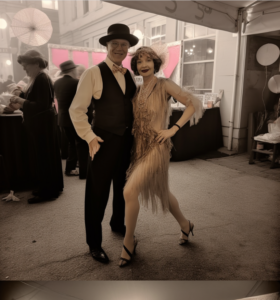 Imagine a huge, white wedding tent on the edge of the Chesapeake Bay, between the docks and the jetty. The tent has seen a few years, and it’s fraying a bit around the edges. Some of the seams don’t close properly. It’s not tied down the way it should be. It doesn’t look like it would pass a safety inspection.
Imagine a huge, white wedding tent on the edge of the Chesapeake Bay, between the docks and the jetty. The tent has seen a few years, and it’s fraying a bit around the edges. Some of the seams don’t close properly. It’s not tied down the way it should be. It doesn’t look like it would pass a safety inspection.
The frame of the tent is made of metal beams. Electrical wires run along these beams to power chandeliers and electric heaters. The junction box outside the tent is exposed to the elements.
It starts to rain. The carpet along the edge of the inside area is getting soaked in several locations. Could an electrical current travel from that junction box through the wet carpet?
 The rain finally stops, and volunteers move tables so resort workers can bring in industrial vacuum cleaners to slurp up the water.
The rain finally stops, and volunteers move tables so resort workers can bring in industrial vacuum cleaners to slurp up the water.
The afternoon turns bright and sunny, and things start to dry out a bit. There’s some hope we’re past the worst, and ready for a lovely evening.
150 dancers are dressed in their 1920s costumes, ready to have a fun evening of dinner, drinks, and lots of dancing.
Then the storm rolls in. High winds. Black clouds. Lightning. Whitecaps gleam on the dark grey water and sea mist blows across the docks. The ducks are hiding their heads under their wings.
Thor is angry.
The flaps of the tent crack in the howling wind. The doors crash open and closed. The chandeliers sway. The guests are casting wary eyes at the heavy electric heaters, dangling from the roof on thin chains. And everyone is wondering what happens if lightning hits one of the metal braces that hold the tent together.
A friend asks, “Do you feel like we’re on the Titanic?”
“We’re certainly dressed for it,” I said.
It was a memorable night, to be sure. The organizers ended things early, and some of us retreated to the small dance floor in the restaurant. No one was hurt, and we’ll be talking about this “meet me at the beach” for years to come.

